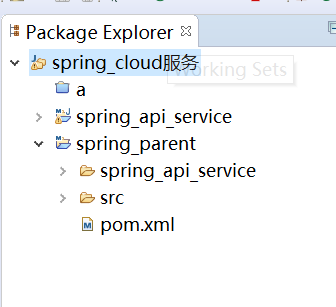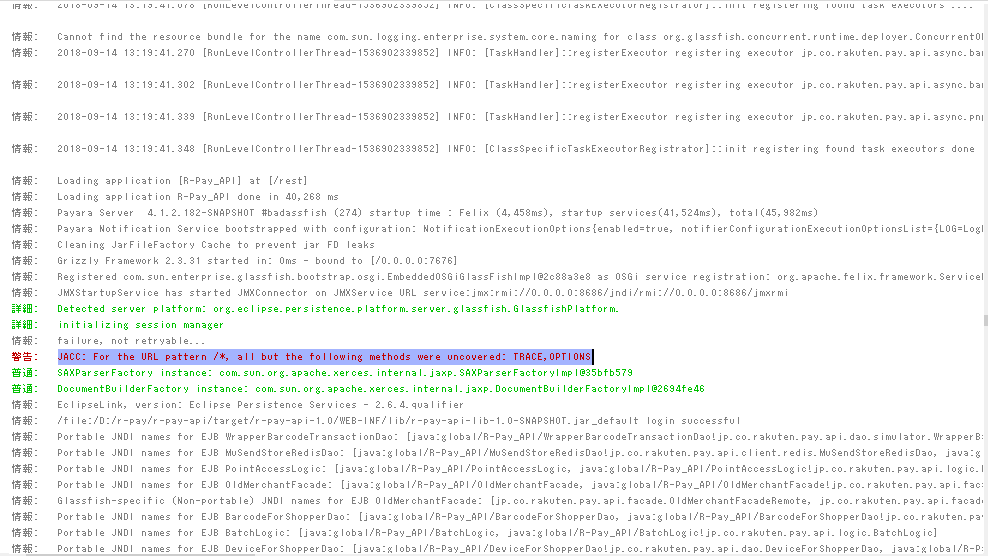可以将文章内容翻译成中文,广告屏蔽插件可能会导致该功能失效(如失效,请关闭广告屏蔽插件后再试):
问题:
I spent 4 full days trying everything I can to figure out the memory leak in an app I\'m developing, but things stopped making sense a long time ago.
The app I\'m developing is of social nature, so think profile Activities (P) and list Activities with data - for example badges (B). You can hop from profile to a badge list to other profiles, to other lists, etc.
So imagine a flow like this P1 -> B1 -> P2 -> B2 -> P3 -> B3, etc. For consistency, I\'m loading profiles and badges of the same user, so each P page is the same and so is each B page.
The general gist of the problem is: after navigating for a bit, depending on the size of each page, I get an out-of-memory exception in random places - Bitmaps, Strings, etc - it doesn\'t seem to be consistent.
After doing everything imaginable to figure out why I am running out of memory, I have come up with nothing. What I don\'t understand is why Android isn\'t killing P1, B1, etc if it runs out of memory upon loading and instead crashes. I would expect these earlier activities to die and be resurrected if I ever Back to them via onCreate() and onRestoreInstanceState().
Let alone this - even if I do P1 -> B1 -> Back -> B1 -> Back -> B1, I still get a crash. This indicates some sort of a memory leak, yet even after dumping hprof and using MAT and JProfiler, I can\'t pinpoint it.
I\'ve disabled loading of images from the web (and increased the test data loaded to make up for it and make the test fair) and made sure the image cache uses SoftReferences. Android actually tries to free up the few SoftReferences it has, but right before it crashes out of memory.
Badge pages get data from the web, load it into an array of EntityData from a BaseAdapter and feed it to a ListView (I\'m actually using CommonsWare\'s excellent MergeAdapter, but in this Badge activity, there is really only 1 adapter anyway, but I wanted to mention this fact either way).
I\'ve gone through the code and was not able to find anything that would leak. I cleared and nulled everything I could find and even System.gc() left and right but still the app crashes.
I still don\'t understand why inactive activities that are on the stack don\'t get reaped, and I\'d really love to figure that out.
At this point, I\'m looking for any hints, advice, solutions... anything that could help.
Thank you.
回答1:
I still don\'t understand why inactive activities that are on the stack
don\'t get reaped, and I\'d really love to figure that out.
This is not how things work. The only memory management that impacts activity lifecycle is the global memory across all processes, as Android decides that it is running low on memory and so need to kill background processes to get some back.
If your application is sitting in the foreground starting more and more activities, it is never going into the background, so it will always hit its local process memory limit before the system ever comes close to killing its process. (And when it does kill its process, it will kill the process hosting all the activities, including whatever is currently in the foreground.)
So it sounds to me like your basic problem is: you are letting too many activities run at the same time, and/or each of those activities is holding on to too many resources.
You just need to redesign your navigation to not rely on stacking up an arbitrary number of potentially heavy-weight activities. Unless you do a serious amount of stuff in onStop() (such as calling setContentView() to clear out the activity\'s view hierarchy and clear variables of whatever else it may be holding on to), you are just going to run out of memory.
You may want to consider using the new Fragment APIs to replace this arbitrary stack of activities with a single activity that more tightly manages its memory. For example if you use the back stack facilities of fragments, when a fragment goes on the back stack and is no longer visible, its onDestroyView() method is called to completely remove its view hierarchy, greatly reducing its footprint.
Now, as far as you crashing in the flow where you press back, go to an activity, press back, go to another activity, etc and never have a deep stack, then yes you just have a leak. This blog post describes how to debug leaks: http://android-developers.blogspot.com/2011/03/memory-analysis-for-android.html
回答2:
Some tips:
Make sure you are not leak activity context.
Make sure you are don\'t keep references on bitmaps. Clean all of your ImageView\'s in Activity#onStop, something like this:
Drawable d = imageView.getDrawable();
if (d != null) d.setCallback(null);
imageView.setImageDrawable(null);
imageView.setBackgroundDrawable(null);
Recycle bitmaps if you don\'t need them anymore.
If you use memory cache, like memory-lru, make sure it is not using to much memory.
Not only images take alot of memory, make sure you don\'t keep too much other data in memory. This easily can happens if you have infinite lists in your app. Try to cache data in DataBase.
On android 4.2, there is a bug(stackoverflow#13754876) with hardware acceleration, so if you use hardwareAccelerated=true in your manifest it will leak memory. GLES20DisplayList - keep holding references, even if you did step (2) and no one else is referencing to this bitmap. Here you need:
a) disable hardware acceleration for api 16/17;
or
b) detach view that holding bitmap
For Android 3+ you can try to use android:largeHeap=\"true\" in your AndroidManifest. But it will not solve your memory problems, just postpone them.
If you need, like, infinite navigation, then Fragments - should be your choice. So you will have 1 activity, which will just switch between fragments. This way you will also solve some memory issues, like number 4.
Use Memory Analyzer to find out the cause of your memory leak.
Here is very good video from Google I/O 2011: Memory management for Android Apps
If you dealing with bitmaps this should be a must read: Displaying Bitmaps Efficiently
回答3:
Bitmaps are often the culprit for memory errors on Android, so that would be a good area to double check.
回答4:
Are you holding some references to each Activity? AFAIK this is a reason which keeps Android from deleting activities from the stack.
We\'re you able to reproduce this error on other devices as well? I\'ve experienced some strange behaviour of some android devices depending on the ROM and/or hardware manufacturer.
回答5:
I think the problem maybe a combination of many factors stated here in the answers are what is giving you problems. Like @Tim said, a (static) reference to an activity or an element in that activity can cause the GC to skip the Activity. Here is the article discussing this facet. I would think the likely issue comes from something keeping the Activity in an \"Visible Process\" state or higher, which will pretty much guaranty that the Activity and its associated resources never get reclaimed.
I went through the opposite problem a while back with a Service, so that\'s what got me going on this thought: there is something keeping your Activity high on the process priority list so that it won\'t be subject to the system GC, such as a reference (@Tim) or a loop (@Alvaro). The loop doesn\'t need to be an endless or long running item, just something that runs a lot like a recursive method or cascaded loop (or something along those lines).
EDIT: As I understand this, onPause and onStop are called as needed automatically by Android. The methods are there mainly for you to overide so that you can take care of what you need to before the hosting process is stopped (saving variables, manually saving state, etc.); but note that it is clearly stated that onStop (along with onDestroy) may not be called in every case. Additionally, if the hosting process is also hosting an Activity, Service, etc. that has a \"Forground\" or \"Visible\" status, the OS might not even look at stopping the process/thread. For example: an Activity and a Service are both luanched in the same process and the Service returns START_STICKY from onStartCommand() the process automatically takes at least a visible status. That might be the key here, try declaring a new proc for the Activity and see if that changes anything. Try adding this line to the declaration of your Activity in the Manifest as: android:process=\":proc2\" and then run the tests again if your Activity shares a process with anything else. The thought here is that if you\'ve cleaned up your Activity and are pretty sure that the problem is not your Activity then something else is the problem and its time to hunter for that.
Also, I can\'t remember where I saw it (if I even saw it in the Android docs) but I remember something about a PendingIntentreferencing an Activity may cause an Activity to behave this way.
Here is a link for the onStartCommand() page with some insights on the process non-killing front.
回答6:
so the only thing i can really think of is if you have a static variable that references directly or indirectly to the context. Even something so much as a reference to part of the application. I\'m sure you have already tried it but i will suggest it just in case, try just nulling out ALL of your static variables in the onDestroy() just to make sure the garbage collector gets it
回答7:
The biggest source of memory leak I have found was caused by some global, high level or long-standing reference to the context. If you are keeping \"context\" stored in a variable anywhere, you may encounter unpredictable memory leaks.
回答8:
Try passing getApplicationContext() to anything that needs a Context. You might have a global variable that is holding a reference to your Activities and preventing them from being garbage collected.
回答9:
One of the things that really helped the memory issue in my case ended up being setting inPurgeable to true for my Bitmaps. See Why would I ever NOT use BitmapFactory's inPurgeable option? and the answer\'s discussion for more info.
Dianne Hackborn\'s answer and our subsequent discussion (also thanks, CommonsWare) helped clarify certain things I was confused about, so thank you for that.
回答10:
I encountered the same problem with you. I was working on a instant messaging app, for the same contact, it is possible to start a ProfileActivity in a ChatActivity, and vice versa.
I just add a string extra into the intent to start another activity, it takes the information of class type of starter activity, and the user id. For example, ProfileActivity starts a ChatActivity, then in ChatActivity.onCreate, I mark the invoker class type \'ProfileActivity\' and user id, if it\'s going to start an Activity, I would check whether it is a \'ProfileActivity\' for the user or not. If so, just call \'finish()\' and go back to the former ProfileActivity instead of creating a new one.
Memory leak is another thing.



